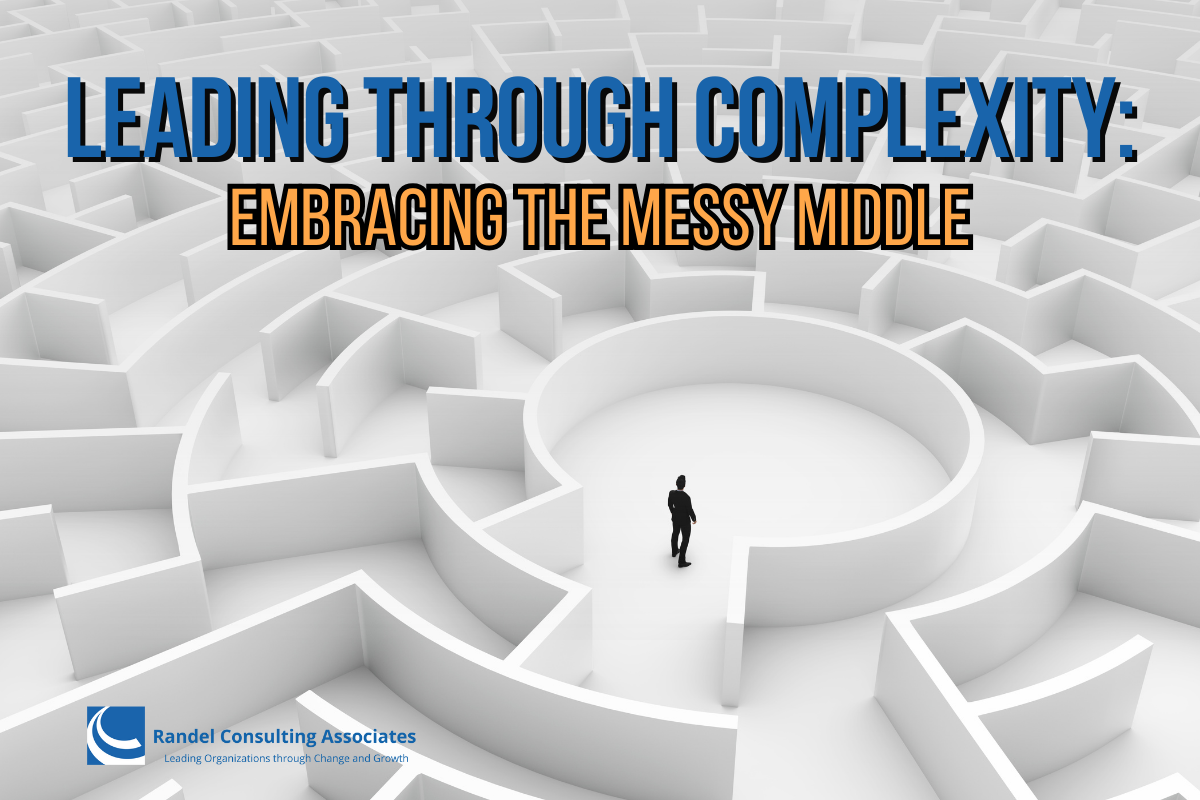Dear Change Leader,
Have you ever found yourself in a meeting where half the agenda items feel like routine business, while the other half discuss existential threats to your organization? This cognitive whiplash isn’t just common in leadership today—it’s the defining feature.
Consider what might be on your plate this week:
Your finance team needs budget approvals for next quarter. HR is moving ahead with the usual performance review cycle. Meanwhile, your industry faces unprecedented regulatory uncertainty, key partnerships are in flux, and the strategic plan you carefully crafted six months ago suddenly feels outdated.
This isn’t a failure of planning or execution. It’s the reality of leading in today’s environment.
The Leadership Paradox
What makes modern leadership particularly challenging is that these contrasting realities exist simultaneously. You’re not shifting between stable and unstable periods—you’re navigating both at once.
This creates several common tensions:
- Operational vs. Strategic Focus: Daily operations demand attention while existential questions loom
- Team Perspectives: Some colleagues remain focused on functional excellence while others sense gathering storms
- Governance Expectations: Boards and stakeholders often expect certainty precisely when it’s least available
- Personal Leadership: Projecting confidence while privately processing uncertainty
The most effective leaders recognize something crucial: different aspects of organizational life require fundamentally different leadership approaches.
Mapping the Leadership Domains
Drawing from Dave Snowden’s work on complex adaptive systems, we can identify five domains that require distinct leadership orientations:
- Clear Domain
When cause-effect relationships are obvious and predictable, established processes work reliably. Think payroll processing, compliance reporting, or standard customer service interactions. Leadership here means:
- Establishing clear procedures
- Monitoring for consistency
- Implementing best practices
- Complicated Domain
These situations remain predictable but require specialized expertise to navigate multiple valid approaches. Examples include technical implementations, financial modeling, or market analysis. Leadership here requires:
- Engaging the right experts
- Evaluating alternative approaches
- Applying good practices adapted to your context
- Complex Domain
Here we enter unpredictable territory where cause-effect relationships can only be understood in retrospect. Strategy development, culture change, and innovation initiatives live here. Effective leadership means:
- Running parallel small experiments
- Amplifying what works, dampening what doesn’t
- Enabling emergent practices through learning cycles
- Chaotic Domain
Urgent situations with no clear patterns demand decisive action. Crisis management, rapid market shifts, or disruptive competition fall here. Leadership requires:
- Acting decisively to establish stability
- Moving quickly without perfect information
- Creating novel practices through necessity
- Confused Domain
At the intersection of the other domains lies confusion—where you’re still determining which domain you’re in. This isn’t a failure state but a natural part of sense-making. Leadership here means:
- Gathering diverse perspectives
- Remaining open to multiple interpretations
- Actively looking for patterns to clarify the appropriate approach
Why This Matters Now
You likely have elements from all five domains in your organization today. Your accounting systems operate in the Clear domain while your strategic planning navigates the Complex. Some teams may be handling Chaotic market disruptions while others manage Complicated technical implementations.
The leadership challenge isn’t choosing between these approaches—it’s knowing which to apply when, and helping your organization understand why you’re shifting between them.
Three Practices for the Week Ahead
- Domain Mapping: Take 20 minutes to list your top priorities, and identify which domain each primarily lives in. Are you applying the appropriate leadership approach?
- Team Calibration: In your next leadership meeting, discuss how different parts of the organization might be operating in different domains. This simple conversation can reduce tension when team members have conflicting perspectives.
- Communication Clarity: When announcing decisions, explicitly name the domain you’re operating in: “This is a complex situation where we need to experiment and learn” vs. “This is a clear process we need to execute consistently.”
Remember, the disorientation you sometimes feel isn’t a sign that you’re failing as a leader—it’s evidence that you’re holding the full complexity of your role. The ability to navigate multiple domains simultaneously is the hallmark of mature leadership.
Until next time,
P.S. Dave Snowden developed the Cynefin sense-making framework as a tool to help leaders assess the various domains of challenge they are facing. Read an article about the framework, or watch a short overview video to learn more.
Join Me At These Upcoming Events!
April 4, 2025: I’m hosting a roundtable discussion for change leaders like you. Join us as we dig into these five leadership domains and exchange questions, experiences, and insights. More Information
April 9, 2025: I’m speaking about the importance of Psychological Safety for leaders and executive coaches. This virtual call is relevant for you if:
- you want to learn how your own behaviors can be positively used to promote safety in your teams, or
- you want to support the leaders with whom you work in becoming more self-aware and intentional with how they behave
Contact me for registration details!
EFFECTIVE CHANGE RESULTS FROM INTENTIONAL LEADERSHIP
We’re a leadership and organization development consultancy. My team and I work with leaders like you to prepare for and lead successful change processes.
Here’s why our clients call us:
- Leadership Coaching: I support leaders as they navigate transitions into new roles or expanded responsibilities.
- Group Coaching and Learning Programs: Bringing groups of leaders together, I facilitate learning experiences and months-long programs that equip people to be effective change leaders.
- Effective Teams and Stronger Organizations: I work with leaders and their teams with tailored processes that increase their effectiveness, building layers of aligned teams that transform organizations.


